The French king who was a good king
He gifted us many treasures including a beloved recipe, la poule au pot
Bonjour, c’est Véro
(Almost) on the road again
Bags are packed.
In a few hours I will be heading out on my first assignment of the 2025 touring season.
Les réjouissances (celebrations) will start with a bang in Paris where I will be welcoming une vingtaine de voyageurs (about 20 travelers) on Monday. Parisians will be out of town for one more week on their spring vacation, yet tens of thousands of tourists are in Paris for Easter. A lively scene awaits no doubt.
The sun has been playing hide-and-seek, impacting my least favorite part of any trip, packing.
On the bright side we will be in Paris all week, and if I run out of clothing I will know where to go. On the not so bright side my closets are finally rid of last-minute purchases I’ve made on the road since 2022. To let you in on a little secret the local branch of the Red Cross and their boutique know me by my first name!
Yes, bags are packed.
This doesn’t mean I won’t miss my place, city and friends over the next few weeks as various itinerant assignments lead me all over France with just a few days at home in between. Five tours to lead until early July. Over 50 days on the road.
Such is the life of a tour director.
This month while preparing for upcoming tours I also made time to meet friends. There were apéros, dinners and even an impromptu lunch en terrasse for a last- minute birthday celebration.
Déjeuner en terrasse
Le Vieux Mûrier is an institution in Tours and one of my favorite local addresses (I featured the owner, Claire, in the first video interview of my YouTube series, “French and Entrepreneur” in 2024.) It’s a café turned restaurant and bar depending on the time of day.
Le Café du Vieux Mûrier a pignon sur rue. It’s a well established business. Everyone in town knows it and the famous historic square it sits on, place Plumereau.
Every Thursday Claire and her team offer a special: le mijoté du jeudi, a traditional recipe, comfort food at its best. Over the last few months I’ve sampled pot-au-feu and bouillabaisse there, both delicious.
When I stopped by on Wednesday I noticed la poule au pot (chicken in a pot) would be featured on the ardoise (board) the following day. A few minutes later I had reached out to friends (one of whom had a birthday to celebrate during Easter weekend.)
It was a lovely time, un petit bonheur (small joy) we all savored at a great table overlooking the square.
The restaurant’s poule au pot was not as rustic looking as I remembered but it hit the spot and provided the perfect conversation starter: You’ll be hard-pressed to find a French native who doesn’t know the name of the monarch who made this dish famous.
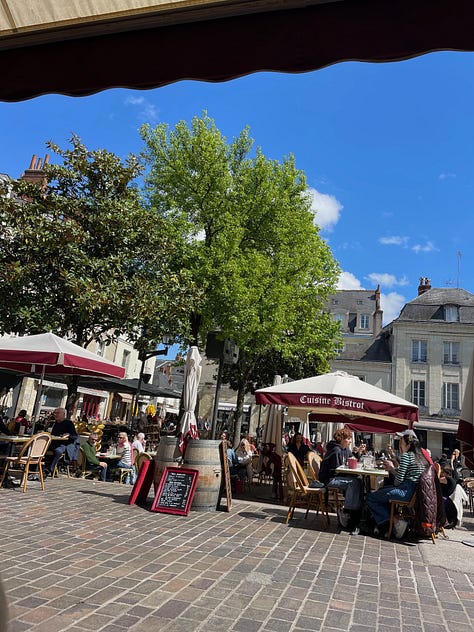
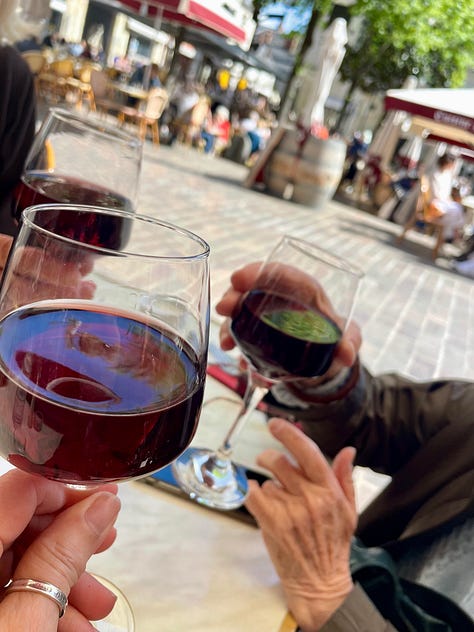
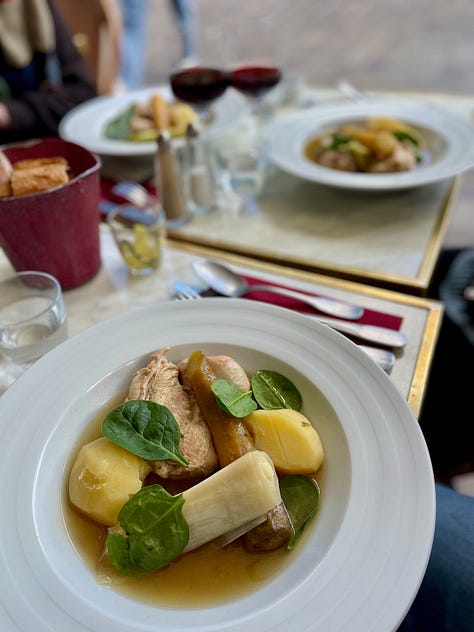
Remembering “le Bon Roi Henri”
To many visitors in Paris Henri IV is first and foremost the statue of a king they walk past along le Pont Neuf. That equestrian bronze statue, commissioned by his second wife Marie de’ Medici, was inaugurated in 1613, a posthumous tribute. Henri had been assassinated by a religious zealot three years earlier. Destroyed in 1792 in the tumultuous years that followed the storming of the Bastille it was rebuilt in the early 19th century. It can be seen here in an old photo captured in the 1800s.
Some visitors know that Henri IV was nicknamed “le Vert Galant” (the Old Charmer) a reference to the womanizing ways he never shook off even in his later years.
The popular garden at his feet “square du Vert Galant” will remind you if you forget.
Those who research Henri’s story will find out he was the first king in the famous Bourbon dynasty that gave us so many of the “Louis.” They will also learn he was a protestant who had to convert to catholicism to become king and later advocated for religious tolerance.
They might also discover that unlike most of the other French kings Henri was crowned in Chartres over 430 years ago (instead of Reims) an anniversary celebrated earlier this year in Chartres, “la Journée Henri IV.”
Many may not realize that Henri IV, long before his descendant Louis XIV conjured up Versailles, was one of France’s great builder kings. He demonstrated early on a keen interest in urban planning creating the first Parisian (and European) royal squares. We know them today as “la place des Vosges” and “la place Dauphine”.
Originally from southwestern France (a region known as le Béarn) he was the first king to be mostly based in Paris, a city he planned to modernize long before Baron Haussmann and his employer Napoleon III came along. Henri developed a grand plan for the Louvre palace transforming the former medieval fortress into a more hospitable royal residence (including la Grande Galerie connecting the Louvre to the now defunct Tuileries palace.) Most of his successors would dutifully follow that plan as the Louvre expanded.
The more observant visitors may know that Henri IV is referred to as “le Bon Roi Henri” (the Good King Henri.)
Mais pourquoi ? Why?
French history was re-written to such an extent in the 19th century it can be challenging to separate facts from fiction.
What I do know as a former student in the French public school system is that Henri IV was close to his subjects and concerned about their well-being. Or so our history textbooks claimed.
Stories published decades after his death report that King Henri once declared: “Si Dieu me donne encore de la vie, je ferai qu’il n’y aura point de laboureur en mon Royaume qui n’ait moyen d’avoir une poule dans son pot.” (to make a long quote shorter, the king wanted all peasants to be able to feed their family with a chicken in a pot every Sunday.)
He was aware when he came to power that after decades of religious wars, his people were struggling and craved food… and peace.
I, and generations of French children, learned to recognize Henri IV in illustrations like these:

Whether the story is true or not la poule au pot (a chicken slowly cooked in a rich, fragrant broth with vegetables) was France’s national dish for a while at least.
It’s become too much of a rarity on menus around the country but I know I can always find la poule au pot in Chartres (where one of the tours I lead conveniently takes me several times a year.)
Quelle chance! I was even able to find some in my city, Tours, earlier this week thanks to le Café du Vieux Mûrier and savored every bite in excellent company.
One last note: Recipes of the renowned poule au pot may vary now and then but the dish (essentially a hearty soup) should always be served with a spoon. You don’t want to leave any of the tasty broth in your plate. Mopping up with bread? Sure, but baguette slices will only take you so far!
Do you want to give this French classic a try? Here’s a demo (with the traditional recipe.)
Et bien sûr, merci au Bon Roi Henri !
What you may have missed
The week-long French Immersion workshops I’ll be running in the Loire Valley in October are sold out! There’s now a waiting list. If you are interested in joining us down the road, reach out.
I publish shorter stories in English and in French in the “Notes” section of Substack several times a week. Have you checked them out?
I took a trip to Monoprix and turned an errand run into a teachable moment.
Earlier this month I eavesdropped on a conversation at a local café terrasse and shared another slice of French life “made in southern France.”




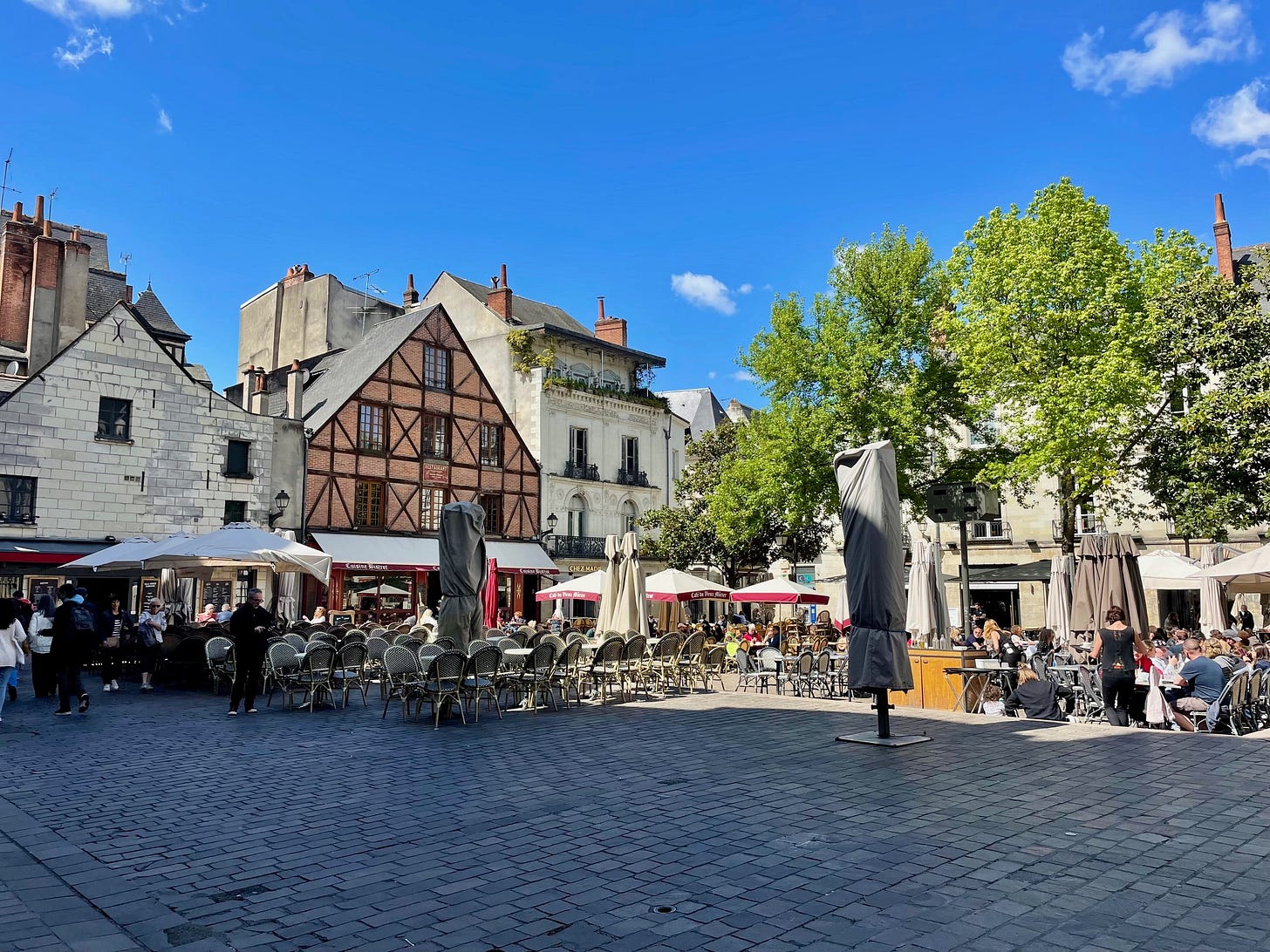
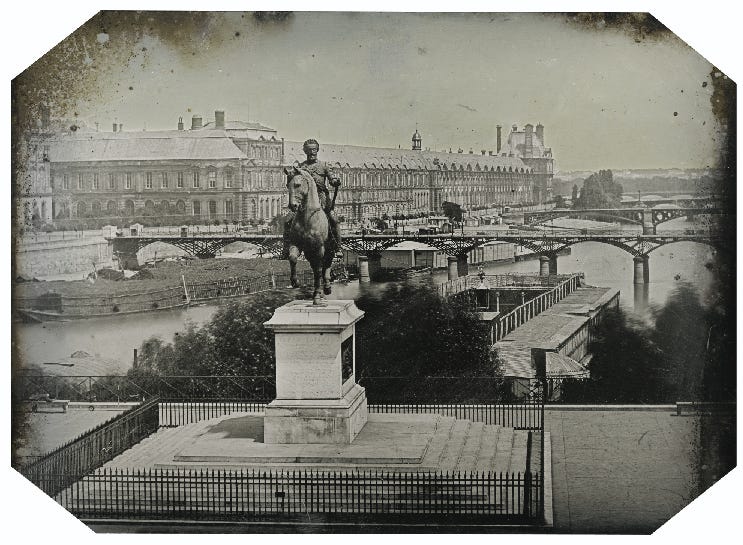

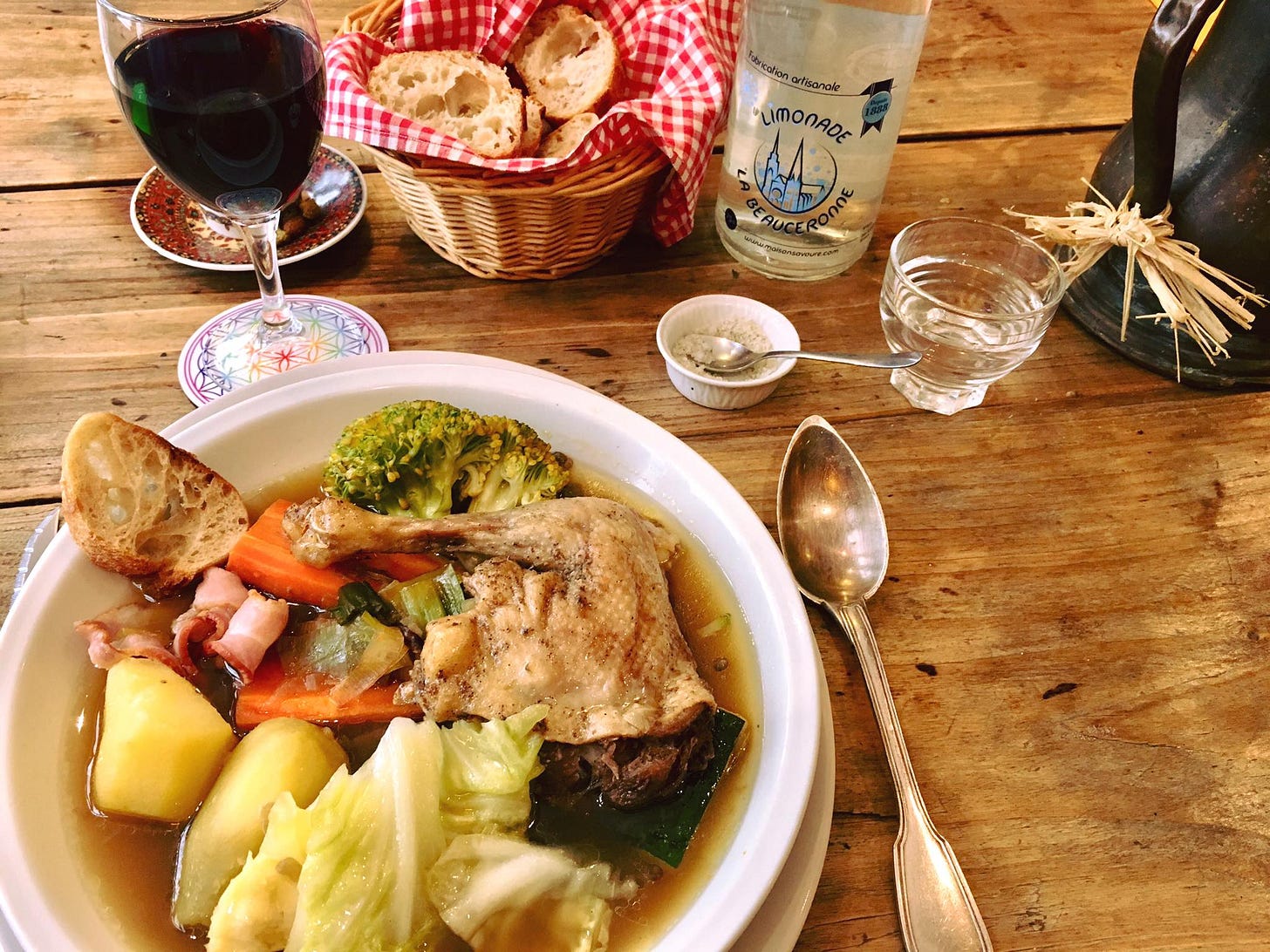


As always, Véro, you have brought history alive with this post. The phrase “a chicken in every pot” (or “a chicken for every pot”) was borrowed in the United States in the late 1920s in an ad for Herbert Hoover’s presidential campaign. My mom. Who had grown up during the Depression, was still repeating it in the 1950s when I was a young child. Grâce à Henri IV, the phrase persists when we talk about trying to give everyone the means to feed their families. Thank you for the photos and demo. This will be fun to make! Happy touring.
A most delicious and informative slice of French life. Merci !